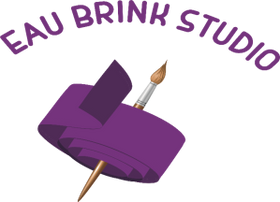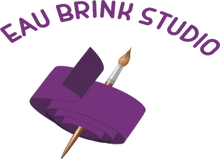Incorporating Textiles in Mixed Media Art: A Guide for Beginners
Mixed media art offers endless possibilities for creativity, allowing artists to combine different materials and techniques to create unique and dynamic pieces. One of the most versatile and exciting elements to incorporate into mixed media art is textiles. Whether you're a seasoned artist looking to expand your repertoire or a beginner curious about this art form, textiles can add texture, depth, and a tactile quality that transforms your work. In this guide, we'll explore the basics of using textiles in mixed media art and offer tips to help you get started.
Why Incorporate Textiles?
Textiles bring a rich variety of textures and patterns that can complement other media such as paint, paper, and found objects. The softness of fabric, the intricate patterns of lace, or the roughness of burlap can create visual and tactile contrasts that draw viewers in. Textiles also have a history and cultural significance, which can add layers of meaning to your artwork.
Materials You’ll Need
Getting started with textiles in mixed media doesn’t require a vast collection of supplies. Here are some basics you might want to gather:
Fabrics: Start with a variety of fabrics like cotton, silk, linen, burlap, or even recycled textiles. Each fabric has its own texture and weight, which can affect how it interacts with other materials.
Threads and Yarns: Use these for stitching, embroidery, or adding texture. Metallic threads, wool yarns, and embroidery floss offer different effects.
Adhesives: Fabric glue, Mod Podge, gel medium and a number of sheet glues such as Bondaweb can help you adhere textiles to other surfaces.
Needles: If you plan to sew or embroider by hand, a good set of needles is essential. Consider different sizes depending on the thickness of your fabrics and threads.
Scissors: A pair of sharp fabric scissors is crucial for cutting textiles cleanly and a separate pair for papers.
Basic Techniques for Beginners
Here are some simple techniques to start incorporating textiles into your mixed media projects:
Fabric Collage
Cut or tear pieces of fabric and layer them on your canvas or paper. Use fabric glue or gel medium to adhere them. Experiment with overlapping textures and patterns to create interesting backgrounds or focal points.
Stitching and Embroidery
Add hand stitching or embroidery to your mixed media work to create texture and detail. Simple stitches like running stitch, backstitch, or French knots can add a lot of interest. You can stitch directly onto fabric or through layers of paper and fabric.
Fabric Painting
Paint directly onto fabric using acrylics, fabric paint, or even dye. This can add color and design to plain fabrics, making them more integrated into your overall piece. Once dry, you can cut or tear the fabric and use it in your work.
Layering with Transparencies
Sheer fabrics like tulle, organza, or lace can be layered over other elements to create depth and subtlety. The transparency allows other parts of your artwork to show through, creating a complex visual effect.
Textile as Texture
Use textiles purely for their texture. For example, rough burlap can add a rustic, earthy feel, while smooth silk might bring elegance and softness. You can even scrunch, pleat, or gather fabric to create three-dimensional textures.
Tips For Sucess
Experiment Freely:
Don’t be afraid to try different combinations of materials. Mixed media is all about exploration and discovery. Sometimes unexpected combinations can yield the most exciting results.
Balance Is Key:
While textiles can add a lot of visual interest, too much can overwhelm your piece. Pay attention to the overall composition and balance the textiles with other media.
Mind the Adhesive:
Some adhesives can seep through thin fabrics or stiffen them too much. Test on a small piece before applying it to your work.
Finish and Protect:
If your mixed media piece includes delicate textiles, consider how you’ll protect them. A layer of varnish or protective spray might be necessary, but test it first to ensure it doesn’t affect the fabric negatively.
Conclusion
Incorporating textiles into mixed media art opens up a world of possibilities, allowing you to explore new textures, patterns, and meanings in your work. Whether you’re layering fabrics, stitching details, or adding texture, textiles can bring a unique and personal touch to your art. So gather your materials, let your creativity flow, and enjoy the process of making something truly your own.
Happy creating!





This all looks very interesting, do you travel as far as Surrey to give talks/workshops to textile groups? We are Dorking Crestive Textiles, we are looking for speaker/tutors for our 2026 program.
Leave a comment